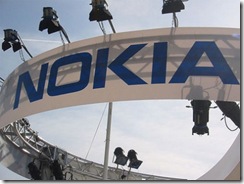Global quarterly handset shipments slumped by 15.8 per cent year-on-year in the first quarter of 2009, from 290.8 million units to 244.8 million, according to global IT research firm IDC. However, the smartphone market grew by four per cent over this period, largely driven by demand in Western Europe, North America and the Asia Pacific region, and as more operators subsidised high-end handsets in a bid to fuel data revenues.
Market leader Nokia saw its shipments drop to less that 100 million in a first quarter period for the first time in two years
“Some operators in mature markets have shifted product portfolios, and some have smartphones accounting for as much as 50 per cent of the entire handset offering,” stated Ryan Reith, senior research analyst at IDC’s Mobile Phone Tracker. “We believe this strategy will continue, along with an increase in devices that are media and messaging centric, to help operators’ revenues.”
Nokia saw its volumes drop below 100 million units for the first time in two years, a decrease of almost 20 per cent from a year earlier; however it was Motorola and Sony Ericsson that were the hardest hit with their shipments diving by 46.4 per cent and 35 per cent respectively.
IDC attributes Sony Ericsson’s contracting market due to several key markets moving away from mid- and high-tier devices towards low-cost models, where the manufacturer does not currently compete.
Joss Gillett, senior analyst at Wireless Intelligence noted that handset vendors are streamlining their device portfolios to focus on high-end consumer segments to generate higher margins, and on lower-tier devices to maintain volumes and market share. Operating margins have also been negatively impacted by a high-level of product inventories, strong price competition, and a decline in the average selling price (ASP).
“We estimate that the average operating margin at the top five vendors – Nokia, Samsung, Sony Ericsson, Motorola and LG – declined to around four per cent in Q109, down from an average of 13 per cent a year ago,” a Wireless Intelligence report stated.





0 comments ↓
There are no comments yet...Kick things off by filling out the form below.
Leave a Comment